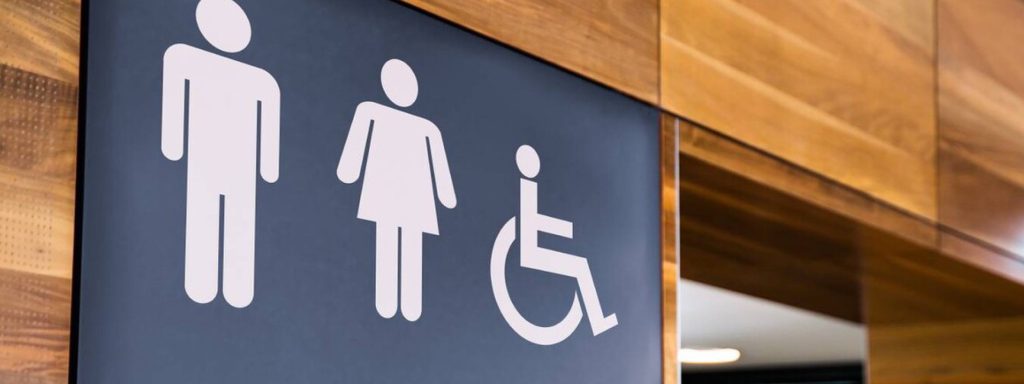It came to light recently that a Government report from 2020- 2021 into public support for the use of different types of public toilet provision produced some interesting results.
One stood out: 2% of responses were said to support the use of accessible toilet provision – just 351 out of 17589 responses in total. Sound surprising? You can find the link to the main report at the bottom of this article, but these are the main relevant points in brief:
Four themes were taken from the responses.
1. Responses read as supporting a type of toilet provision
Support for other types of toilet provision were 83% for non-gendered toilets, 12% for separate sex toilets, 6% for both types, and 2% for accessible toilets.
2. Safety concerns
Less than 1% of responses citied concerns about the safety of disabled people amidst greater numbers of responses citing concern for trans/binary people (79%), women (75%), girls (3%), children (2%) and men (1%).
3. Other issues
78% of all responses cite accessible toilet provision as an additional issue. Also, overall, responses assumed to support accessible toilet provision were the most varied in identifying wider issues such as menstruation, design of toilets, queuing, and toilet availability compared to those assumed to support other types of toilet provision.
4. Protected characteristics
80% of responses assumed to support accessible toilet provision potentially impact on the protected characteristic of disability in accordance with the Equality Act (2010). So, while only 2% of responses are assumed to support accessible toilets, a significant majority raised the issue of accessible toilet provision later, suggesting it’s important to many people, although it’s frustratingly unclear what the comments were.
Research issues
The way the research was carried out could be the problem as, perhaps surprisingly, no direct questions were asked about which toilet types people supported. Rather, people made their own decisions on what to comment on.
Their responses were then interpreted by the researchers to assume support for a particular toilet provision and counted into groups in accordance with that type.
The report admits the ‘evidence’ can be misleading: The mere 2% of responses said to support accessible toilets may simply reflect the fact that no specific questions were asked about whether people supported accessible toilets.
People may have assumed they would always be available, unlike more controversial types, such as non-gendered toilets. And it’s also possible that people may not have chosen to comment on accessible toilets because they have less personal relevance to them than other types.
Without knowing exactly what people intended with their comments, or lack of them, it’s highly likely that support for accessible toilet provision is a lot higher than this report suggests.
What next?
What could be useful now is research that directly asks people what types of toilet provision they support so answers are less likely to be misinterpreted.
Also, a detailed questionnaire focussing on issues and suggestions which are relevant to different groups of people, such as those with a disability, when using public toilets would provide plenty of useful information when considering toilet provisions.
To read the entire article, visit the following link: Toilet provision for men and women: call for evidence.

